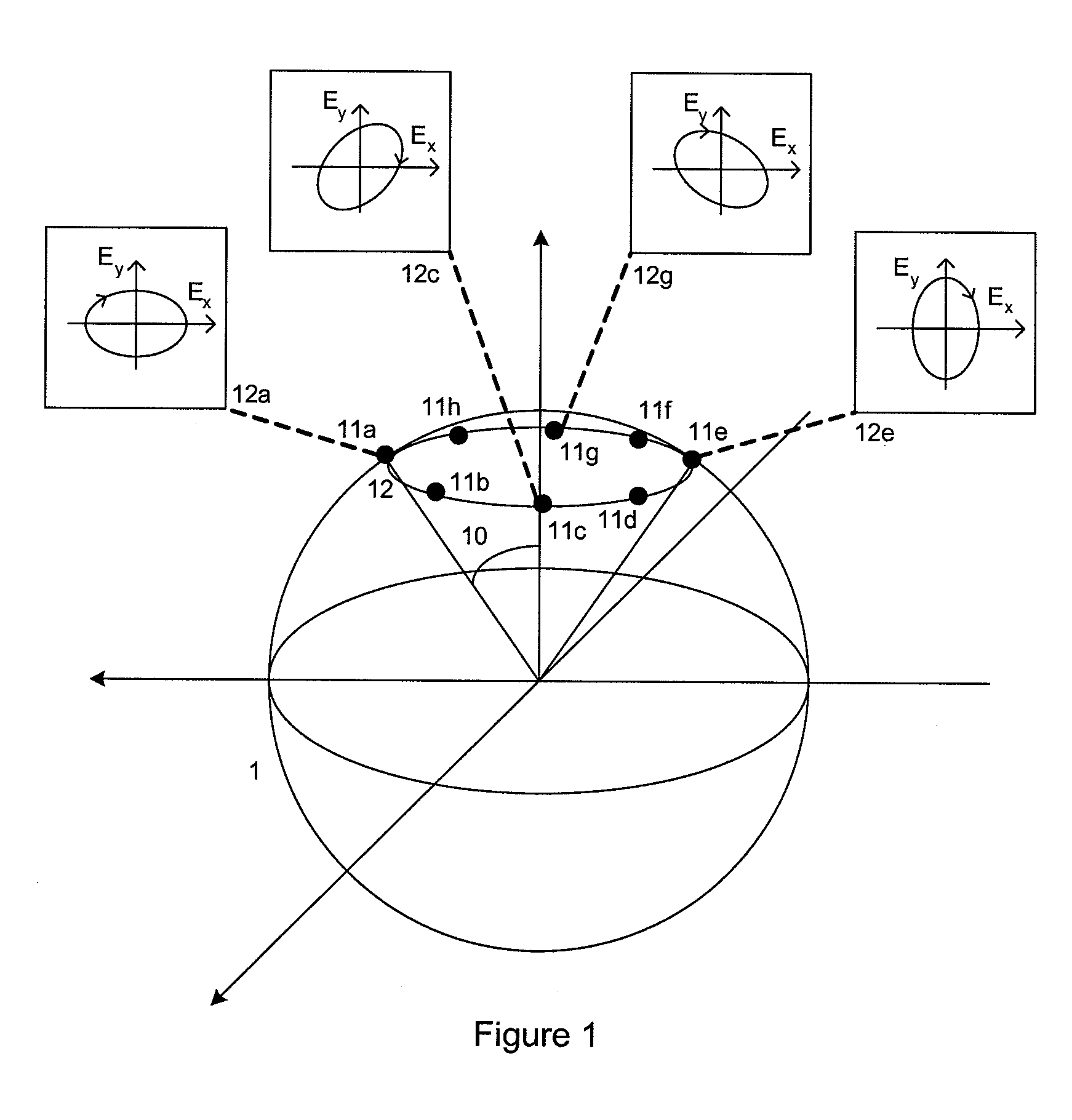Visualizing Birefringent Structures in Samples
a birefringent structure and sample technology, applied in the field of polarized light to visualize structures, can solve the problems of difficult detection of retardance below 5 nm, limited sensitivity of these methods, and unpredictable details of patterns seen, blinking and blinking.
- Summary
- Abstract
- Description
- Claims
- Application Information
AI Technical Summary
Benefits of technology
Problems solved by technology
Method used
Image
Examples
Embodiment Construction
[0060]The invention concerns use of two elliptical polarizers, one of which exhibits a time-varying ellipticity, to visualize birefringent structures in samples. This produces a time-modulated visual scene, in which birefringent structures are evident because their appearance is different from the background.
[0061]One aspect of the invention is to provide modulation between four or more states that lie substantially on the same latitude on the Poincare sphere, as illustrated in FIG. 1. In this embodiment, either the entrance polarizer or analyzer polarizer is substantially a circular polarizer corresponding to the South pole on the Poincare sphere, and the other polarizer expresses the points 11a, 11c, 11e, and 11g. The poles may be reversed, so that the circular polarizer is substantially located at the North pole of the Poincare sphere while the other polarizer executes a series of states surrounding the South pole. What is important is that one polarizer be substantially a circul...
PUM
 Login to View More
Login to View More Abstract
Description
Claims
Application Information
 Login to View More
Login to View More - R&D
- Intellectual Property
- Life Sciences
- Materials
- Tech Scout
- Unparalleled Data Quality
- Higher Quality Content
- 60% Fewer Hallucinations
Browse by: Latest US Patents, China's latest patents, Technical Efficacy Thesaurus, Application Domain, Technology Topic, Popular Technical Reports.
© 2025 PatSnap. All rights reserved.Legal|Privacy policy|Modern Slavery Act Transparency Statement|Sitemap|About US| Contact US: help@patsnap.com



